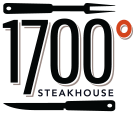Steaks 101: Your Guide to Different Types of Steak
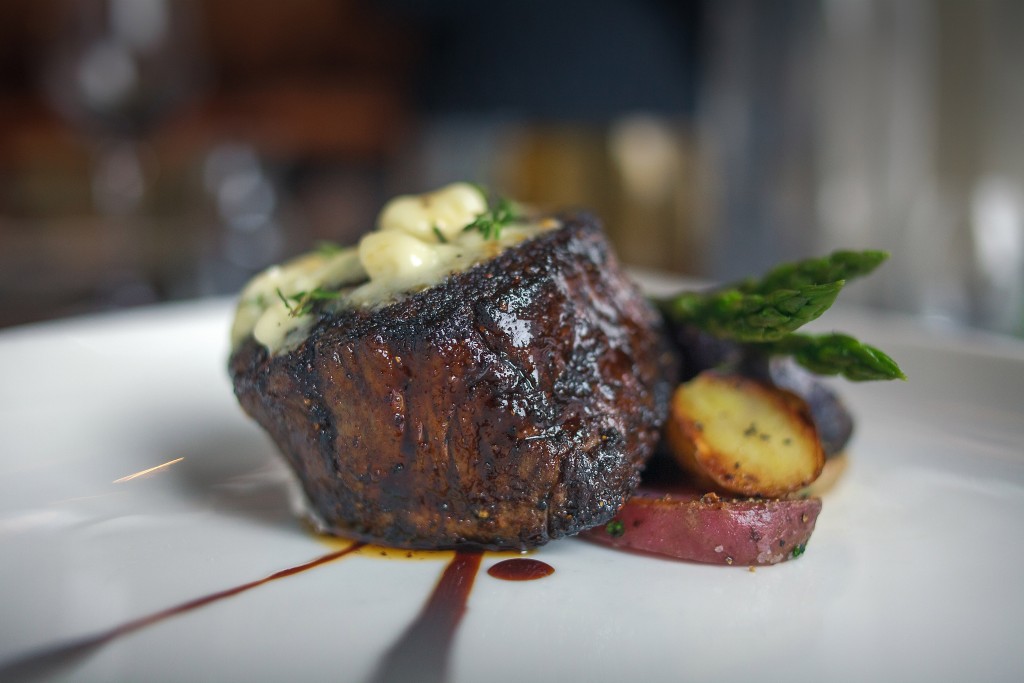
Let’s Talk About Steak
We’re the first to admit that steak can be intimidating, even if you aren’t the one doing the cooking. When you go to a restaurant with a wide selection of cuts and styles of beef, it can feel a little overwhelming when it comes time to place an order.
You could ask your server a series of increasingly specific questions about your options. We’ve got you covered when it comes to a table-side explanation of dry aging. But if you’re more of a Do Your Research Ahead of Time person, then take a look at our new Steak Glossary.
Types of Steak
Prime
Prime is the USDA’s highest grade for beef. The USDA grades all beef sold in the United States, as a way to quickly identify quality.
Prime is the highest grade, and according to the USDA is best for “dry heat cooking.” That means searing, broiling and grilling. This is because Prime beef is the most abundantly marbled grade. That marbling leads to rendered fat, which is why it cooks well on dry heat. That marbling also leads to an exceptional flavor profile in these cuts of beef.
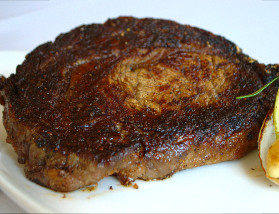
Grass-fed
What does grass-fed mean?
It may seem self-explanatory, but grass fed means the cow ate grass. But what does that mean for what ends up on your plate?
Cows raised on corn or wheat mixtures have a higher fat content than grass-fed beef. So grass-fed beef ends up significantly leaner than the beef you may be accustomed to. The more natural diet for the cattle means meat higher in antioxidants, lower in fat, and has even been linked to decreased inflammation. But the lower fat content also means that it runs a higher risk of drying out if cooked too long. The best thing you can do to have a great grass-fed steak experience is to order it on the rare side.
What’s the difference between veal and beef?
We’ve found that grass-fed veal is considerably more tender than beef. The muscle isn’t as developed, making it less stiff than a regular steak would be. This allows for a greater window when working with the grass-fed version. Our advice is still to order on the south side of medium for the best possible meal.
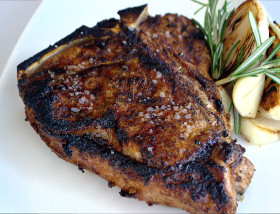
CAB/ Certified Angus
What does Angus beef mean?
This is an adjective that gets attached to beef all the time. You’ve definitely seen it before, but do you know what it means?
The term “Angus” on its own doesn’t have anything to do with the quality of the beef. Angus refers to a breed of cattle that is black in color and is the most common breed in the United States. Angus cattle develops more intramuscular fat (which you might know as marbling), which is valuable for both the tenderness and flavor of the beef.
What are certified Angus beef requirements?
Because of cross-breeding, as far as the USDA is concerned, as long as a cow is 51% black, the beef can be marked as “Angus”. The term Certified Angus offers some more assurance. This comes out of a partnership between the USDA and cuts of Angus beef on the market. In order to be stamped Certified Angus by the USDA, the cut must fall within the USDA’s top two grades for beef (prime or choice) and must also clear a series of other inspection points.
This ensures the quality marbling and flavor associated with the Angus breed of cattle is fully present. We use Certified Angus Beef at 1700, to ensure that what’s on your plate is of the highest quality.
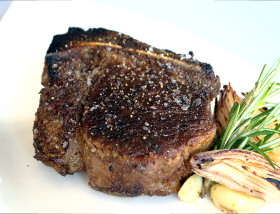
Wagyu
What is Wagyu beef?
Wagyu can be thought of very similar to Angus. Wagyu cattle are a breed that originated in Japan, and first appeared in the United States in the 1970s. Since then, Wagyu steaks have found their way into fine kitchens across the country thanks to the excellent marbling of fat that Wagyu beef possesses. There are even purported health benefits associated with eating Wagyu beef. The specific type of saturated fat that is most prevalent in Wagyu beef is known to have a minimal impact on cholesterol levels.
Our Wagyu beef is sourced from 11 Oaks Farm in Newville, Pennsylvania. Our relationship with this purveyor of exceptional Wagyu beef allows for a rotating selection of Wagyu steak specials.
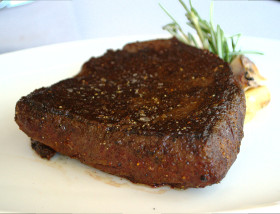
Local Harvest
What does Local Harvest mean?
Locovores, rejoice! When you see “Local Harvest” on our menu, that’s referring to a brand of beef. But it’s a brand that backs up their name with a commitment to sourcing the best beef from locally owned and operated farms. Their Angus beef tastes spectacular and it comes with the added benefit of supporting a family farm. All of their cattle are antibiotic free and raised humanely to ensure the highest quality Angus beef.
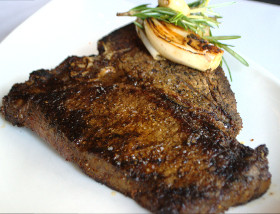
Dry Aged
What is dry aged beef?
Aged steak may seem a little strange, but we think it’s worth trying. The dry aging process is designed to use highly controlled and regulated exposure to certain bacteria to increase tenderness and alter flavors. Have no fear; the bacteria at play here aren’t dangerous. By keeping temperature, humidity, and other factors regulated, the beef is able to age safely.
The mix of bacteria and enzyme going to work on the beef can significantly alter the flavor, but it all depends on how long the beef is aged. The longer it ages, the more concentrated and evolved the flavor gets. Anyone feeling adventurous or looking for a new experience with their steak should try a dry aged option.
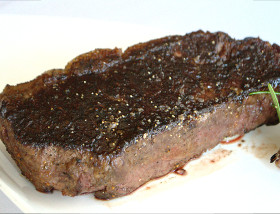
If you’d like to book a dinner and try our perfectly prepared steaks, be sure to make a reservation and take a look at our menu!
